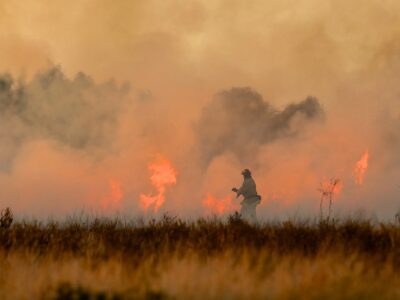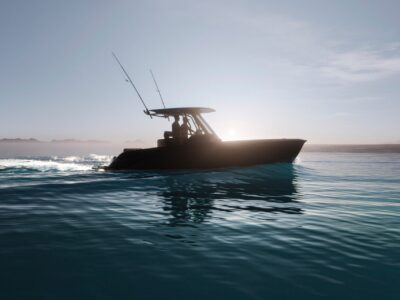The smallest state in the United States by size, Rhode Island covers roughly 1,214 square miles. On May 29, 1790, it became the last of the original 13 colonies to achieve statehood some 150 years after Roger Williams founded the colony as a bastion of religious tolerance. Nicknamed Little Rhody and currently boasting a population of just more than 1 million residents, the New England state also boasts a wide variety of plants and animals, some of which are endangered.
Just like all other states, any plants and animals in Rhode Island that are designated as threatened or endangered under the federal Endangered Species Act (ESA) have protections in place to ensure they don’t end up extinct. Passed in 1973, the ESA offers a wide range of safeguards for the species, including prohibiting their sale, removal, or transportation. More importantly, it provides funding for state-based programs working on species conservation.
The Rhode Island Natural Heritage Program is the primary state-run organization tasked with identifying at-risk plant species and conducting inventories on endangered, rare, and vulnerable animals across the state.
According to the U.S. Fish & Wildlife Service (USFWS), which maintains the federal ESA list in partnership with the National Oceanic and Atmospheric Administration (NOAA), nine threatened or endangered plant and animal species are currently known to occur in Rhode Island.
Read to learn about how three threatened or endangered species ended up on the list and what’s being done to get them off it.
The American Burying Beetle
Photo Courtesy USFWS
The American burying beetle (Nicrophorus americanus) is the largest of the approximately 30 species of carrion beetles in North America. Members of the family Silphidae are decomposers, meaning they generally get their nutrients from dead plants, animals, and other things. Adult American burying beetles reach anywhere from 1 to 1.8 inches in length, receiving their name for their go-to daytime activity: burying themselves into the ground.
The insects fly around at night to seek out carrion, inhabit various habitats and environments, and hibernate in the soil during the winter.
The species is native to 35 states in America, but a rapid decline in their range led them to first be designated as endangered under the ESA in 1989.
The special ruling at the time noted that the reason for the sharp population drop was unknown and that there were two known stable locations of the species, one in Oklahoma and one on Block Island, Rhode Island. The American Burying Beetle Recovery Plan was released a few years later, and plans were established to grow the beetles in labs and eventually introduce these new populations into the wild.
The final target was getting the species reclassified from endangered to threatened, which was officially achieved after an official ruling in 2020. The efforts to re-populate paid off, with the species now occurring in a handful of states. There’s still a long way to go before the beetle is officially off the list entirely. However, according to the USFWS, it is not in danger of extinction for now.
The Hawksbill Sea Turtle
Photo Courtesy Hoffryan
The Hawksbill sea turtle (Eretmochelys imbricata) is one of only seven species of sea turtles in the world. The small to medium-sized turtles have hawk-like beaks and are distributed throughout the Caribbean and western Atlantic Ocean. Compared to other sea turtle species, hawksbill have significantly thicker overlapping plates, called scutes, that protect them during storms and collisions. Adults weigh up to 200 pounds, and their upper shells, called carapaces, can reach 36 inches long.
The species was one of the first animal species listed as endangered in the U.S. when it was designated as such in 1970.
When the ESA was enacted three years later, the hawksbill and all the other already-listed species were carried over to it, and the hawksbill has remained endangered ever since.
Japan ended legal shell trading when it agreed to stop importing hawksbill shells in 1993, but large illegal operations continue. In addition to the human tortoiseshell trade, the driving factor behind the turtles’ decline, other threats include nesting habitat loss from developments, marine pollution, and accidental deaths from commercial fishing operations.
Since the turtles can migrate thousands of miles, an assortment of government, state, and nonprofit operations from North America to the Caribbean have been working to conserve and protect the species over the years. The USFWS maintains numerous wildlife refuges that act as sanctuaries and rehabilitation sites for the hawksbill, including the Prime Hook National Wildlife Refuge just south of Rhode Island.
The Leatherback Sea Turtle
Photo Courtesy Rabon David, USFWS
The leatherback sea turtle (Dermochelys c. coriacea) is the largest, most migratory, widest-ranging, and deepest diving of all sea turtles worldwide. Adults can reach upwards of 8 feet in length and weigh a literal ton (2,000 pounds)!
Just like the hawksbill, the leatherback was listed as an endangered species in 1970 and remains so to this day. In 1992, the USFWS and NOAA’s National Marine Fisheries Service released a recovery plan for the leatherback turtles in the U.S. Caribbean, Atlantic, and Gulf of Mexico — the Pacific populations would have to wait another four years to receive their recovery plan.
The plan pointed out that two of the biggest threats to the species were disturbances to the marine environment from plastic pollution and commercial fisheries. It also noted that the turtles’ populations were stable at the time but needed significant and long-term protections for their beach nesting habitats.
Over the years, countless nesting initiatives and other projects have sprouted up to help these leatherback sea turtles return to their historic population levels.
Scientists tagged Atlantic leatherbacks at nesting beaches and the sea from 1995 to 2010 to better understand their habits and migration patterns.
Additionally, wildlife biologists and government agencies have created and maintained leatherback turtle breeding programs and wildlife refuges. More recently, new analytic and predictive models have been developed that can better analyze potentially unknown or less understood environmental stressors. There’s a long road ahead, but that’s nothing to a species known for swimming more than 10,000 miles a year.





